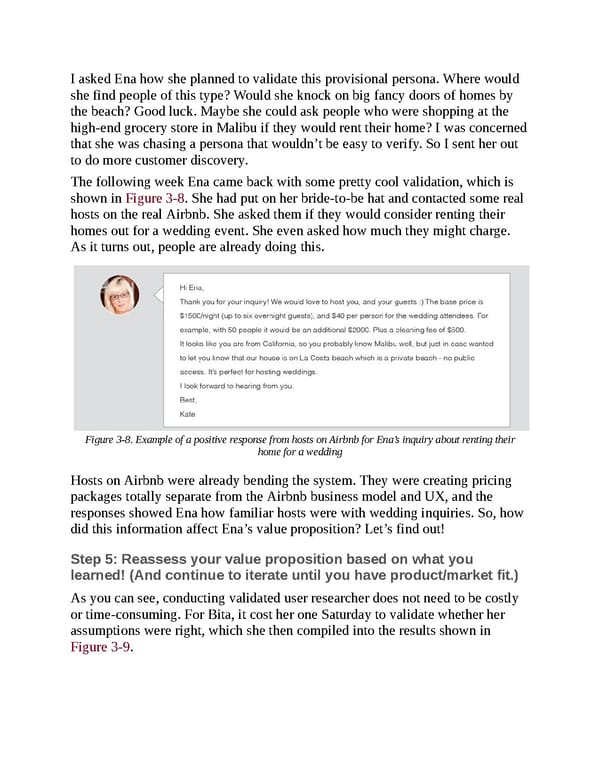I asked Ena how she planned to validate this provisional persona. Where would she find people of this type? Would she knock on big fancy doors of homes by the beach? Good luck. Maybe she could ask people who were shopping at the high-end grocery store in Malibu if they would rent their home? I was concerned that she was chasing a persona that wouldn’t be easy to verify. So I sent her out to do more customer discovery. The following week Ena came back with some pretty cool validation, which is shown in Figure 3-8. She had put on her bride-to-be hat and contacted some real hosts on the real Airbnb. She asked them if they would consider renting their homes out for a wedding event. She even asked how much they might charge. As it turns out, people are already doing this. Figure 3-8. Example of a positive response from hosts on Airbnb for Ena’s inquiry about renting their home for a wedding Hosts on Airbnb were already bending the system. They were creating pricing packages totally separate from the Airbnb business model and UX, and the responses showed Ena how familiar hosts were with wedding inquiries. So, how did this information affect Ena’s value proposition? Let’s find out! Step 5: Reassess your value proposition based on what you learned! (And continue to iterate until you have product/market fit.) As you can see, conducting validated user researcher does not need to be costly or time-consuming. For Bita, it cost her one Saturday to validate whether her assumptions were right, which she then compiled into the results shown in Figure 3-9.
 UX Strategy: How to Devise Innovative Digital Products that People Want Page 73 Page 75
UX Strategy: How to Devise Innovative Digital Products that People Want Page 73 Page 75